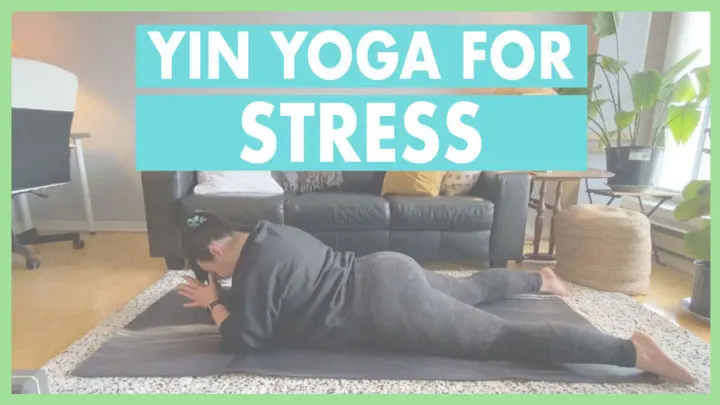We all know that stress plays a major role in our lives and the negative impact it can have on our health. We also all know that yoga and mediation have proven benefits to helping lower stress levels. Yin yoga especially can help to calm the nervous system and help you get into the deeper muscle tissue that you may be ignoring as it gets tighter from stress and other daily worries and movements.
If you have a few minutes or just under 40, give some of these yin poses a go or join me for the full yin sequence for stress to help you unwind and move back out into the world with a little less stress being held in your body.
Yin Yoga Poses for Stress Relief
Try these yin yoga stress relief poses as a sequence (see the full sequence in a video at the end of this article), or take one or two as you need them and fit them into your day when you can. All but toe squat can be done in bed too to begin or end your day!
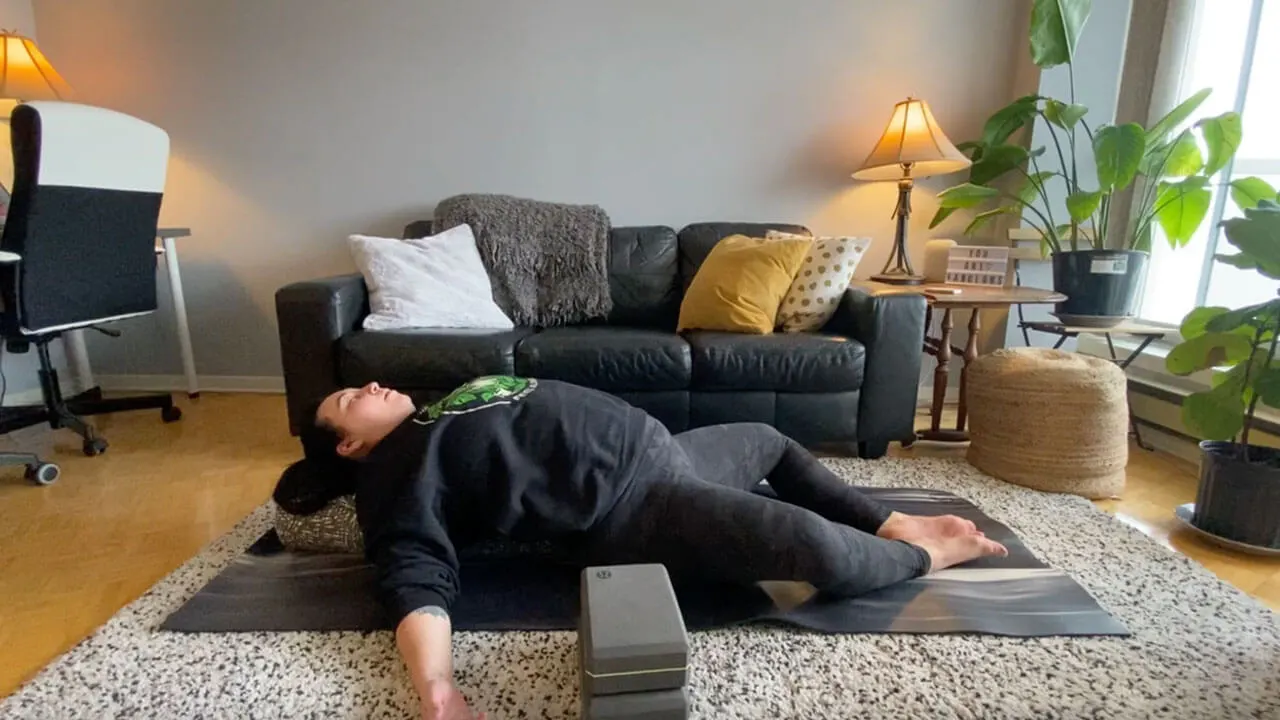
Reclined Butterfly Pose
Get your props ready for a yin-style reclined butterfly pose. To begin, this yin pose will open up the front of your body, especially your chest which we often collapse throughout the day while looking at our phones, computers, and even driving. I recommend using a bolster (or a rolled blanket/towel) and placing it at the base of your spine before leaning back on it lengthwise. Two blocks here can work too as you guide yourself into more of a chest opener.
Bring the soles of your feet together and allow your knees to fall outwards towards the edges of your mat. Bring your feet as close (more intense) or far away (less intense) from your groin as feels good. An option is to add blocks under your knees or thighs for extra comfort, especially if your knees get tender after a few breaths. Or if this doesn’t feel great, try bringing your knees together and walk your feet to the edges of your mat so that your knees fall inward for a more grounding variation. Hold for 3 minutes or about 30 deep breaths.
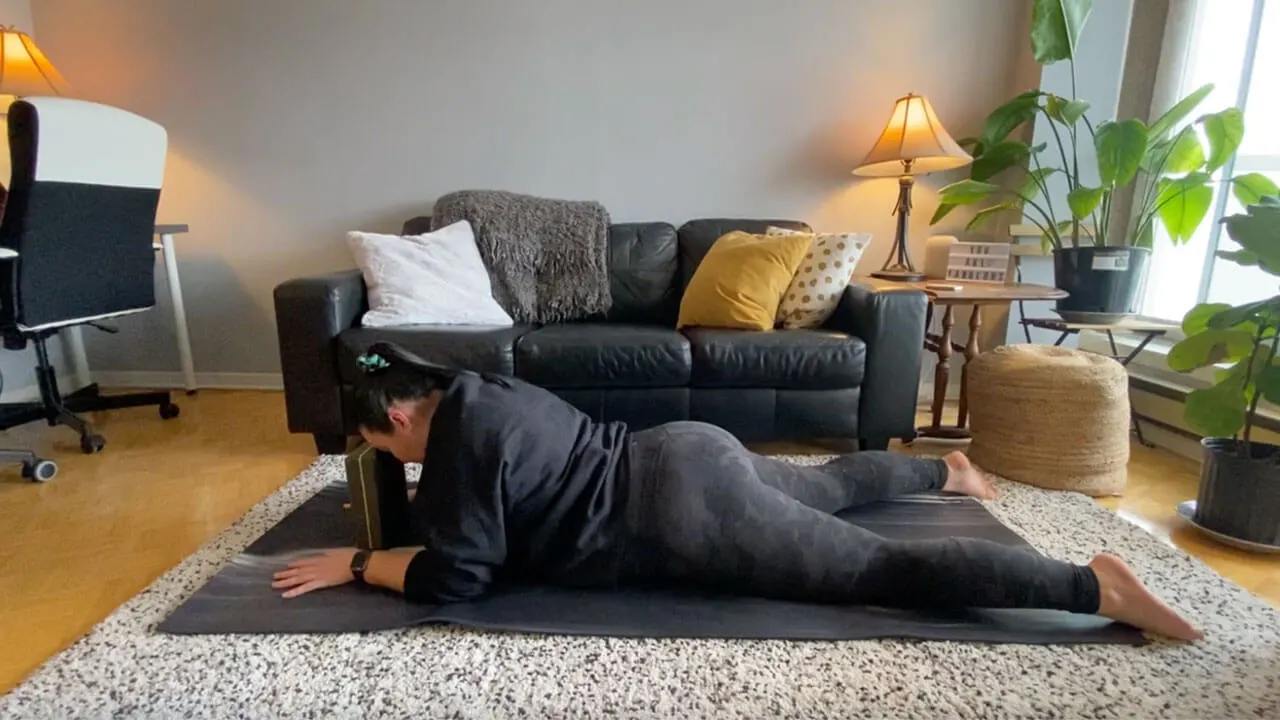
Sphinx & Seal Pose
Moving our way into your back and continuing to open your chest and shoulders, we have sphinx and seal poses. Come to lay on your stomach and begin by bringing your elbows under your shoulders, forearms pointing to the top of your mat. Allow your shoulders to draw down as your chest opens forward.
Your legs can be as close together or far apart as you’d like. Give your bum a wiggle to release your lower back, maybe even squeezing your glutes tight and then letting those muscles go.
Keep your head and neck in line with your spine, looking just over the top of your mat. If your head if feeling heavy or you want to make sphinx pose even more yin-like, place a block under your forehead or bring your hands together, fingers spread wide and rest your forehead on your thumbs.
Hold sphinx pose for 2-4 minutes (20-40 deep breaths). For the final minute or 10-15 breaths, you may journey into seal by walking your hands out to the top corners of your mat at a 45-degree angle. Push into your palms and bring your elbows off of your mat, head looks forward. Remember to keep your legs and glutes relaxed, hips heavy into the mat.
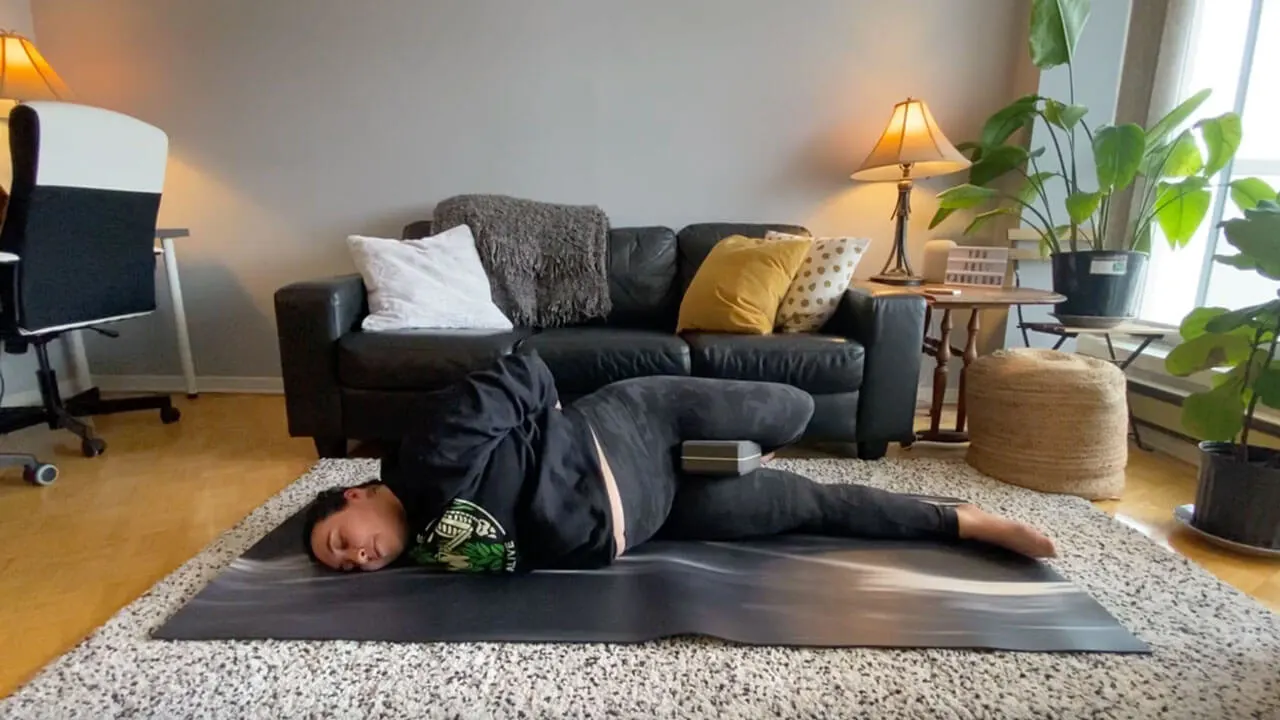
Angel Pose
More focus on your back, chest, and shoulders, we continue to work into these areas that tend to hold a lot of stress. From your stomach, extend your right arm out long to the right, or cactus your arm by bending your elbow so it’s at a 90-degree angle. Everyone’s shoulders are different and either arm position is totally normal!
Place your left hand under your left shoulder. Gently push as you step your left leg behind your right. I find a full step behind can feel quite intense in yin so I recommend using a block, bolster, or pillow between your legs to relax your left leg on top of if it feels good. You have the option to keep your left hand on the mat (not moving it from where you started) or drape it behind your back.
If your neck is sensitive in angel pose, try placing a block under your head like a pillow. Hold for 2-3 minutes (20-30 deep breaths) and repeat on the other side.
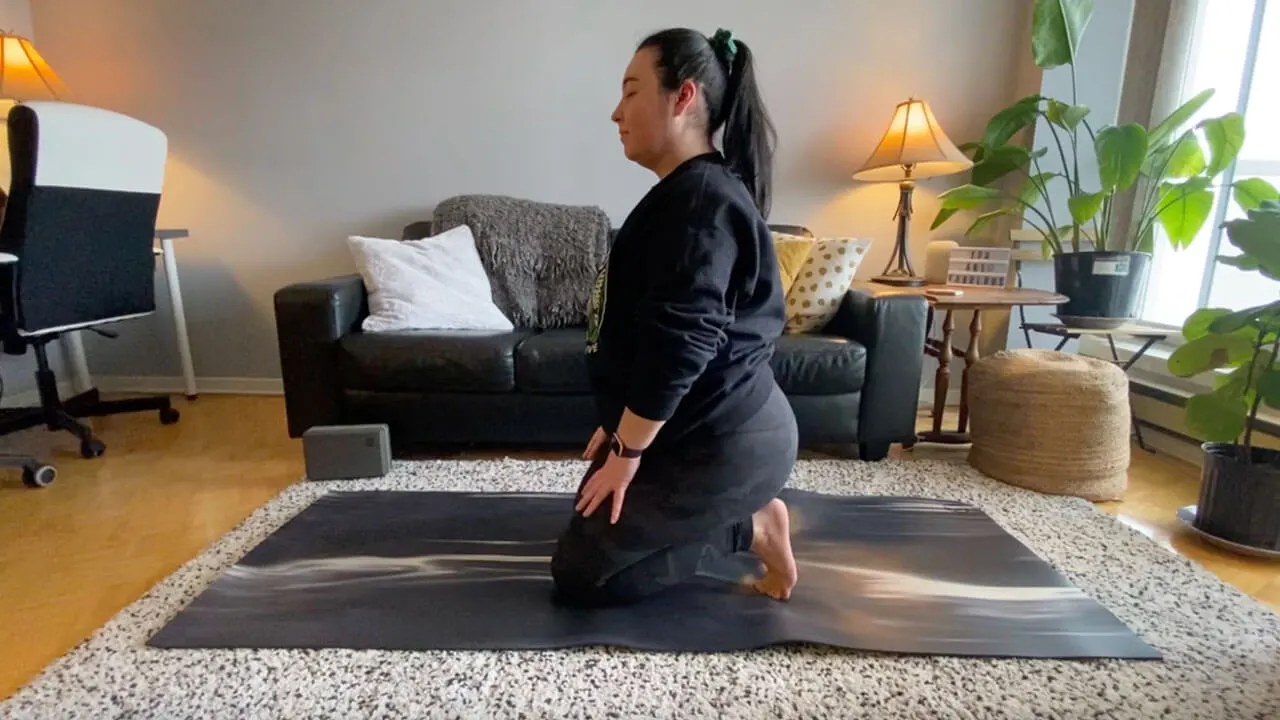
Toe Squat
Stress and anxiety can be felt all the way to our toes and the feet in general take on a lot of physical stress. So while toe squat is not the most comfortable yin pose and can be quite intense, it’s usually held for a shorter length of time but still gives some loving and attention to your feet which are often neglected!
From your hands and knees tuck your toes under. You may need to reach back and help all of your toes curl under. Slowly walk your hands back until they come to rest on your thighs, with a straight spine, and your bum resting on your heels. If this feels like a lot, back off to find your edge. Your hands or fingertips can even be on the ground still if that feels good for your body.
Close your eyes and focus on your breath moving up and down your spine for 1 minute or 10 deep, slow breaths. Repeat 1-minute rounds 1-3 times.
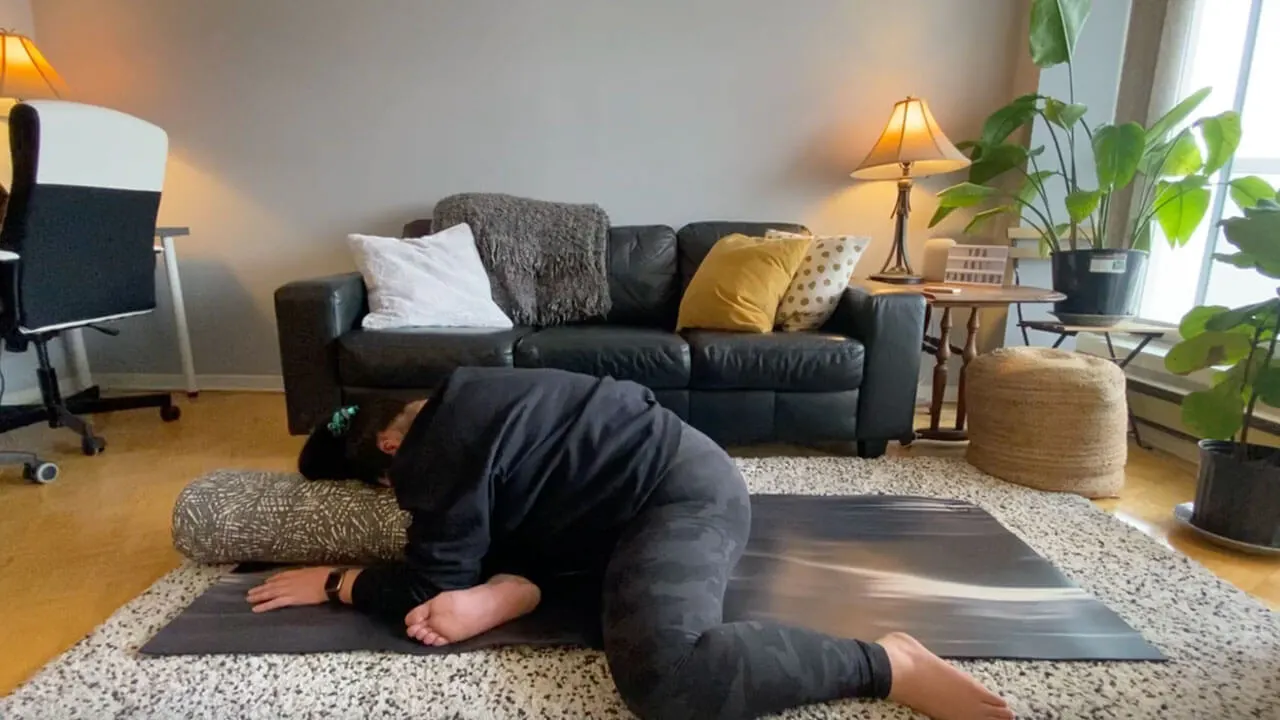
Deer Pose
Deer pose (otherwise known as 90/90) is more of a relaxed hip opener. With deer we move into the hips as they are another area that can hold a lot of tension and get tighter with stress, both physical and mental.
From a seated position with your legs out in front of you, bend your left leg so that it’s at a 90 degree with your knee directly out from your left hip. Bend your right leg into a 90 degree angle as well with your right shin parallel to the front of your mat. Begin by letting your hips feel heavy. You have the option to stay here or fold forward over your right leg with the option to use a bolster to lay over. Another option is to place a block under your forehead if it doesn’t reach the mat. Your head can look to either side or straight down.
Experiment with how it feels to fold your body more towards your right foot on an angle as this could feel better too. Hold for 3-4 minutes (30-40 deep breaths) and repeat on the other side.
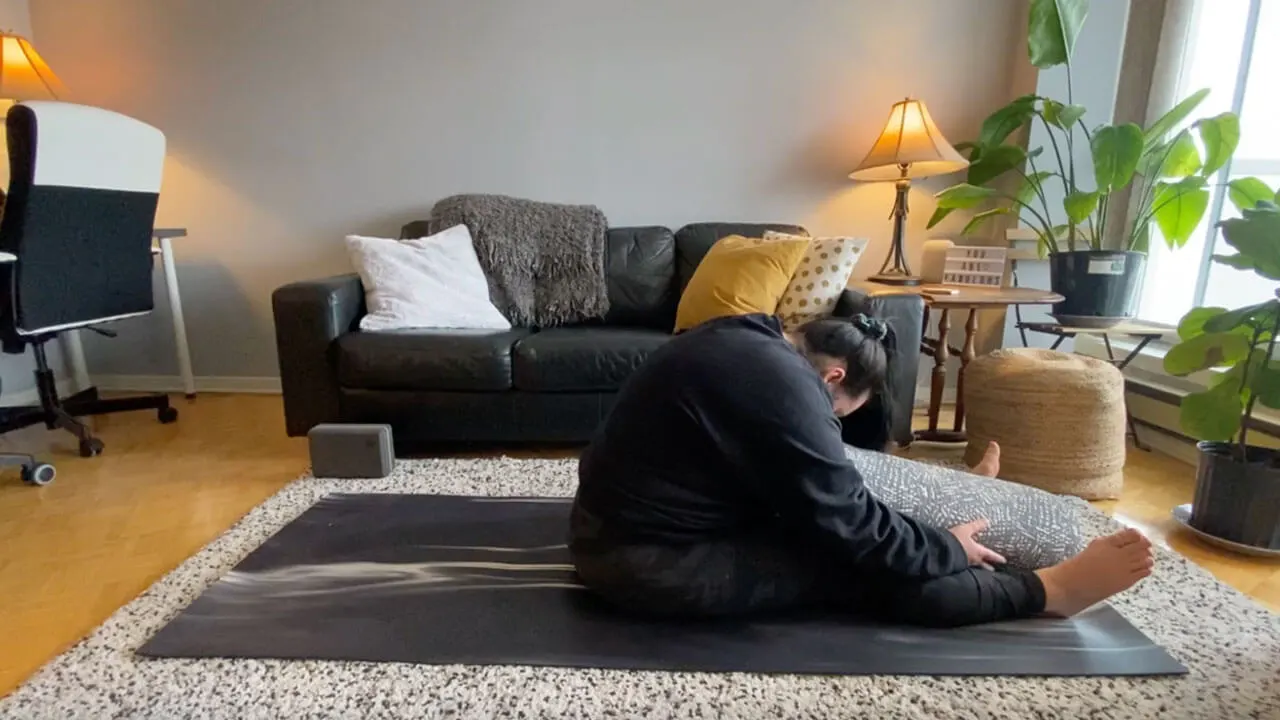
Caterpillar Pose
For some release for your back, we journey into caterpillar. In the yin variation it’s less about folding as deep as you can with a straight spine, but rolling your spine forward in a relaxed way.
Begin with your legs out in front of you, feet touching or as far apart as is comfy. Some like to keep their legs wider so that they can place a bolster or other props between their legs to lay on. Curl your spine forward as you fold towards your legs. Your options are to lay on a prop, use the prop like a bolster to prop your head up by having one end touch your forehead, the other end on the ground so it’s on an angle, or place a block on a bolster to bring the ground to your forehead to rest on. Keep your legs relaxed, feet rolling out, maybe a slight bend in your knees. Hold for 2-3 minutes (20-30 deep breaths).
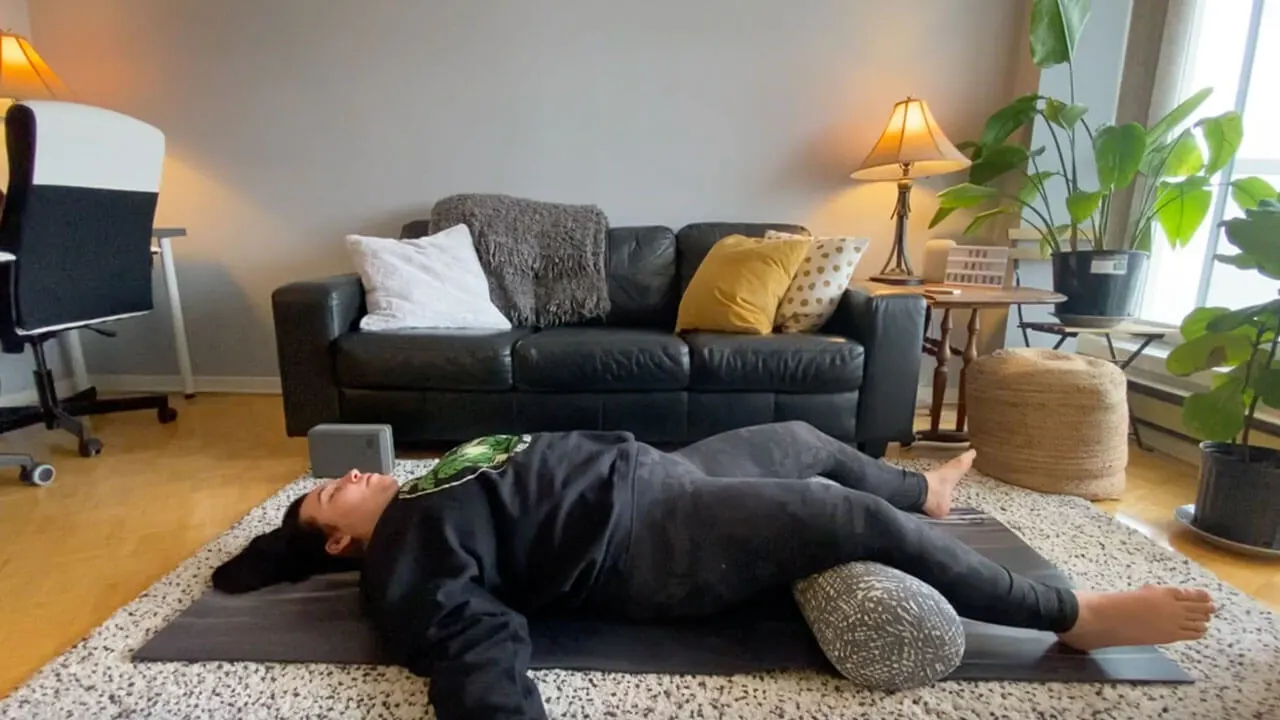
Savasana
Last but certainly not least, and definitely an essential yin yoga pose for managing stress, savasana! Aka corpse pose.
Lay on your back and allow your legs and arms to be wide. Relax all areas of your body and feel yourself become heavy. For sensitive lower backs, place a bolster, rolled blanket/towel, or blocks under your knees. You have the option to place the bolster lengthwise down your spine as we did in reclined butterfly to continue with chest opening. Relax and enjoy for up to 10-15 minutes, but mostly for as long as feels good.
Yin Yoga Sequence for Stress
Join me on the mat as I guide you through all of these poses in a 37-minute yin yoga for stress practice. Grab your props, get into something comfy, maybe even light a candle, and see you on the mat!

